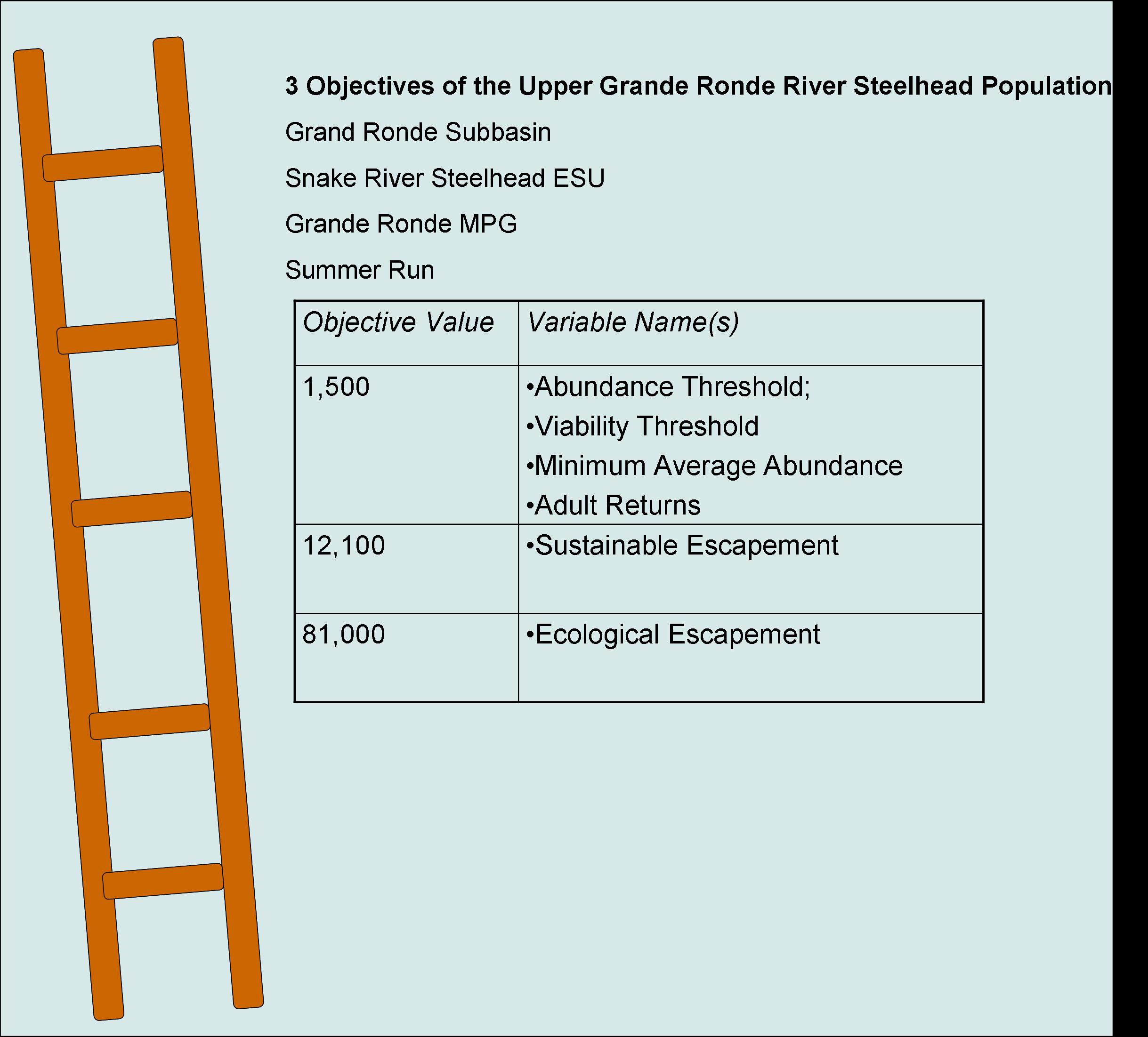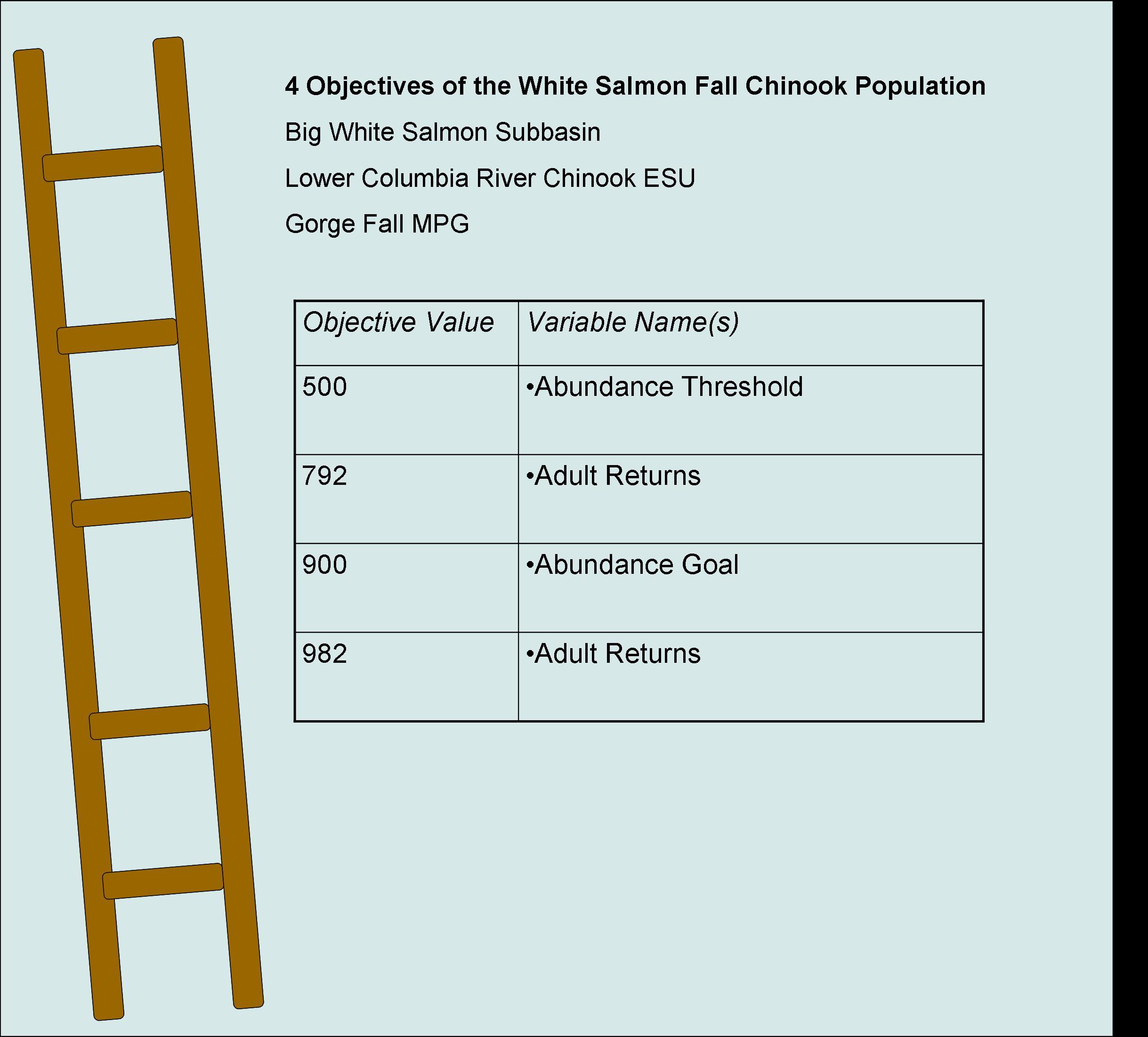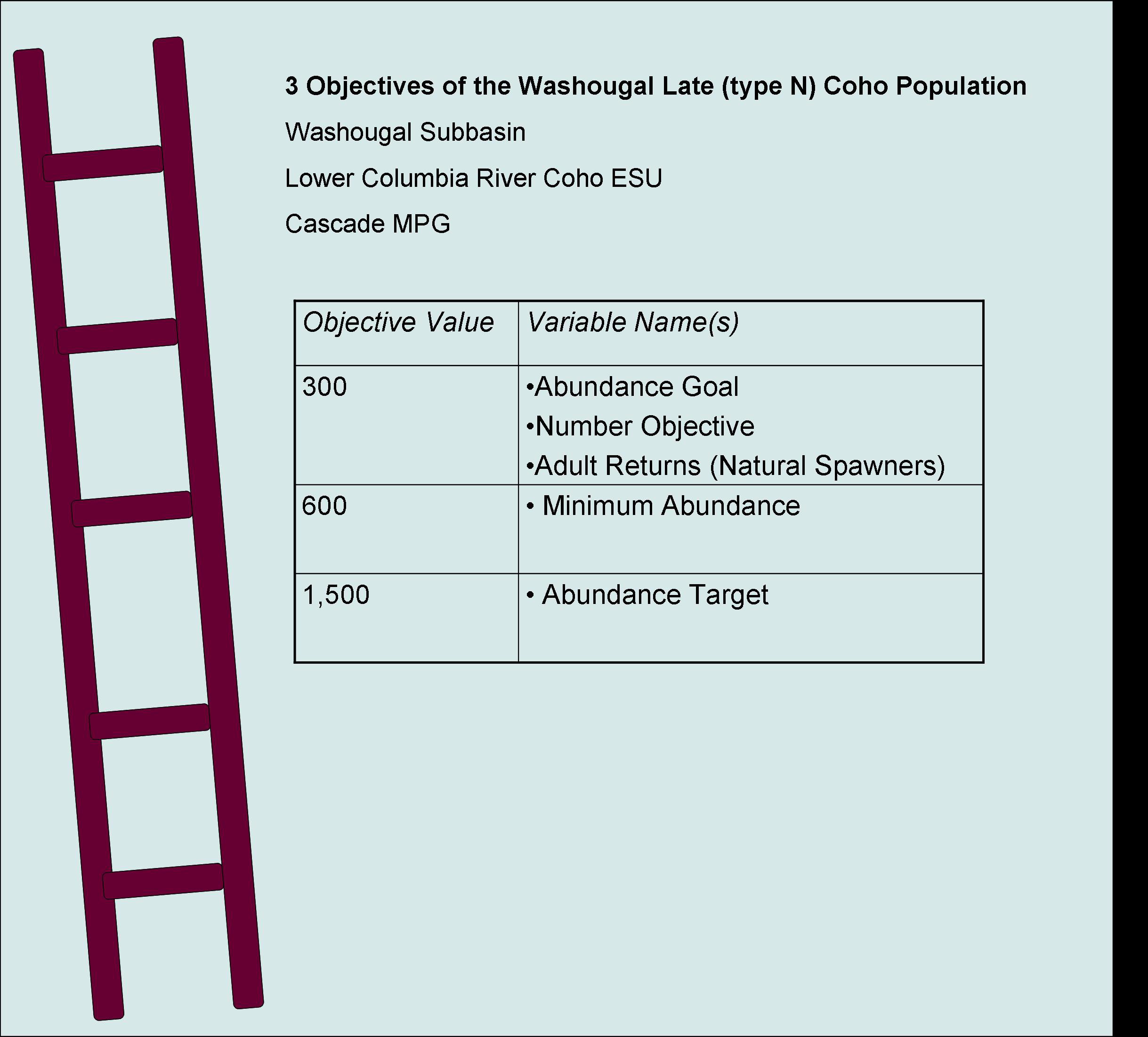Frequently Asked Questions
What Information is in the Mapping tool?
- there are 34 different abundance variable names related to natural-origin salmon and steelhead objectives (click here to view all variable names)
- specific quantitative objectives (no qualitative or vague objectives)
- natural origin salmon and steelhead objectives (no specifically identified hatchery objectives)
- populations and variable names are as described by the authors of the cited documents
- objectives are extracted from documents published between 2004 and 2014, with one document published in 1975
Why are there more than one objective value for a population?
The quantitative natural-origin objectives for a population may have more than one value, because some are:
- near-, mid-, or long-term objectives for the population
- specific to recovery, harvest or for achieving other desired outcome
- from older documents that have been refined in more recent documents
- ranges depicted as 0-500 (or other number) indicates that the document reporting a value of <500. Due to constraints of the basic mapping tool the 'least than 500', i.e., <500, is written as 0-500.
Why are some objective values in parenthesis?
As you view the objectives for a population you will see that some documents provided more than one abundance variable and more than one value for that abundance variable. The order in which the variable names are listed match the order of the objective values. If a document has more than one value for a variable these numbers are grouped within parenthesis. For example, below there are 3 values for the variable 'Sustainable Escapement' (20000, 15000,21900):
Objective variable: Viability Threshold, Sustainable Escapement, Ecological Escapement
Objective value: 1500, (20000, 15000, 21900), 37000
How many populations and combination of populations are there in the mapping tool?
There are 295 populations and combination of populations in the mapping tool
- These include objectives for individual ESA-listed and non-listed populations and objectives for combined populations, such as for an entire subbasin. Some population names may not match the NOAA ESA formal name. All names can be viewed here.
- Each population (or combination of populations) may have one or more abundance objective value(s) from one or more document(s). Sometimes the same value is provided multiple times with a slightly different variable name. Other times there are multiple unique abundance objective values with different variable names (e.g., near- or long-term objective ).
How do multiple objectives for a population fit together?
For some populations with multiple objectives, the objectives fit together by ranging from a minimum abundance (small) to a larger sustainable abundance. Some populations may have some overlap in their numerical objectives or may not fit as neatly together. Below are 5 examples illustrating these variations.








